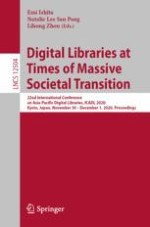2020 | OriginalPaper | Chapter
Collective Sensemaking and Location-Related Factors in the Context of a Brand-Related Online Rumor
Authors : Alton Yeow Kuan Chua, Anjan Pal, Dion Hoe-Lian Goh
Published in: Digital Libraries at Times of Massive Societal Transition
Publisher: Springer International Publishing
Activate our intelligent search to find suitable subject content or patents.
Select sections of text to find matching patents with Artificial Intelligence. powered by
Select sections of text to find additional relevant content using AI-assisted search. powered by
